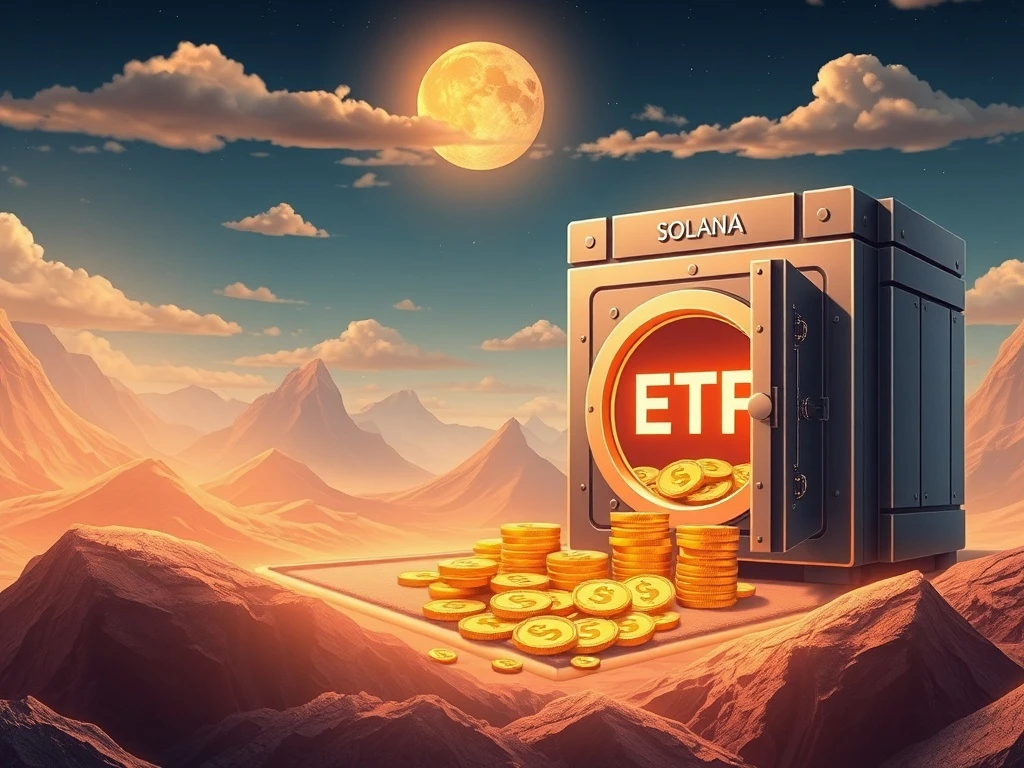Solana ETF Breakthrough: 21Shares Files for Spot Solana ETF Amid Rising Institutional Demand

The cryptocurrency world is buzzing with excitement as 21Shares takes a bold step toward regulatory approval for a Spot Solana ETF. This groundbreaking move could open the floodgates for institutional investment in SOL, one of the most promising blockchain platforms today. But what does this mean for everyday investors, and how might it reshape the crypto landscape?
Why a Spot Solana ETF Matters
Unlike futures-based products, a Spot Solana ETF would hold actual SOL tokens, offering several advantages:
- Direct price exposure without custody complexities
- Reduced tracking errors compared to derivatives
- Greater transparency for institutional investors
Regulatory Hurdles for the Solana ETF
The SEC has historically been cautious about crypto ETFs due to:
| Concern | 21Shares’ Solution |
|---|---|
| Market manipulation | Surveillance-sharing agreements |
| Custody security | Enhanced storage protocols |
| Valuation mechanisms | Transparent pricing models |
Institutional Interest in Solana Grows
The filing reflects increasing confidence in Solana’s:
- High throughput capabilities (65,000 TPS)
- Low transaction costs
- Growing developer ecosystem
Potential Market Impact of a Solana ETF
Approval could trigger:
- Increased liquidity for SOL
- Greater price stability
- Mainstream adoption of Solana technology
What’s Next for the Solana ETF?
While promising, investors should note:
- Typical SEC review takes 6-12 months
- Approval isn’t guaranteed
- Market conditions may change during the process
The 21Shares Spot Solana ETF filing represents a pivotal moment for crypto adoption. By bridging the gap between traditional finance and blockchain innovation, this initiative could accelerate Solana’s journey toward mainstream recognition. While regulatory challenges remain, the growing institutional interest suggests the crypto winter may be thawing for high-performance blockchains like Solana.
Frequently Asked Questions
What is a Spot Solana ETF?
A Spot Solana ETF would hold actual SOL tokens, allowing investors to gain exposure to Solana’s price without directly owning the cryptocurrency.
How does this differ from Bitcoin ETFs?
While similar in structure, a Solana ETF would track a different underlying asset with distinct technological characteristics and market dynamics.
When might the Solana ETF be approved?
The SEC review process typically takes 6-12 months, though timelines can vary based on regulatory considerations.
Why is 21Shares’ filing significant?
It represents the first serious attempt to bring Solana exposure to regulated markets, potentially opening SOL to institutional investors.
What are the risks of investing in a Solana ETF?
Risks include regulatory rejection, market volatility, and potential tracking errors between the ETF and underlying SOL price.









